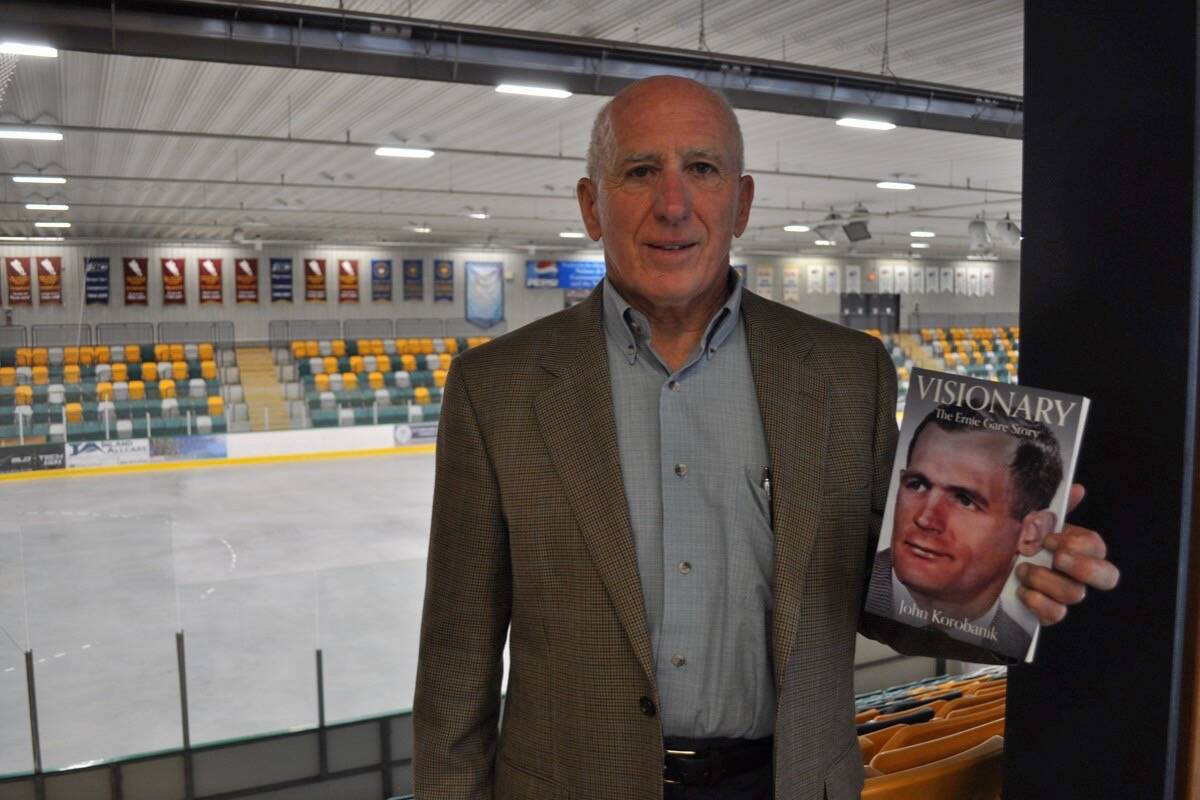John Korobanik remembers Ernie Gare as a disciplinarian, a believer in education who had no problem reminding his student athletes what their priorities should be.
Korobanik was sports editor of the Nelson Daily News from 1965 to 1970. He recalls interviewing athletes at then Notre Dame University in Nelson, where Gare’s personality was ever present.
“They’d be talking and they’re always looking up, his office is right up there, and they’re always looking out to see if Ernie was watching.”
But it wasn’t until five decades later, when Korobanik began researching his book Visionary: The Ernie Gare Story, that he realized the profound influence Gare had on his students.
In Nelson, the Gare name is well known. Ernie Gare was a defenceman for the Nelson Maple Leafs from 1950 to 1963, and his son Danny was a star for the Buffalo Sabres in the 1970s.
But it was Ernie Gare who changed Canadian sports in 1964 when, as Notre Dame’s athletic director, he introduced the country’s first university athletic scholarship.
At the time, athletic scholarships were frowned on by the Canadian Interuniversity Athletics Union. Notre Dame, however, was an independent university and could set its own course.
Gare and school president Father Thomas Aquinas realized there were more junior hockey players who would never go pro than the ones who did. Those players, the pair decided, deserved an opportunity to get a university education at the end of their careers.
“Back in the 60s, Canadian universities didn’t want athletic scholarships. They thought they were booboo because they saw what happened in the U.S. with the abuse of it,” said Korobanik.
“Ernie and Father Aquinas at Notre Dame said, no, we’re going to develop the program the way it should be developed. And they did.”
Scholarships were first given to hockey players, then to skiers. A young Nancy Greene Raine was among Notre Dame’s athletes before she made Olympic history at the 1968 Winter Games.
But it was the student athletes who went on to live their lives outside the spotlight that Gare had the biggest impact on. Korobanik said this wasn’t something he could have understood in the 1960s, but became clear as he reported in his book.
“They attributed their success, not just in the careers, but in their lives, to Ernie and his influence and teaching them that you’re more than just an athlete,” said Korobanik.
“You’re an athlete, you’re a student, and you’re a person, and you have so much to contribute to the country you live in.”
Notre Dame University was closed in 1977, and Gare died of amyotrophic lateral sclerosis, also known as Lou Gehrig’s disease, at age 52 in 1981.
But his legacy has endured. Scholarships are now offered to athletes at universities across Canada. The Ernie Gare Scholarship, meanwhile, continues to provide bursaries to two student athletes every year.
READ MORE:
• Nelson swimming star Marylee Banyard passes away
• ‘A lot of hate’: Oilers, Flames alumni look back at last playoff Battle of Alberta
@tyler_harper | tyler.harper@nelsonstar.com
Like us on Facebook and follow us on Twitter.

